Most people head to the rivers in Texas when temperatures start to soar. Rafting, kayaking, and other fun activities draw plenty of tourists. But how treacherous are these rivers, and which are the most dangerous in Texas?
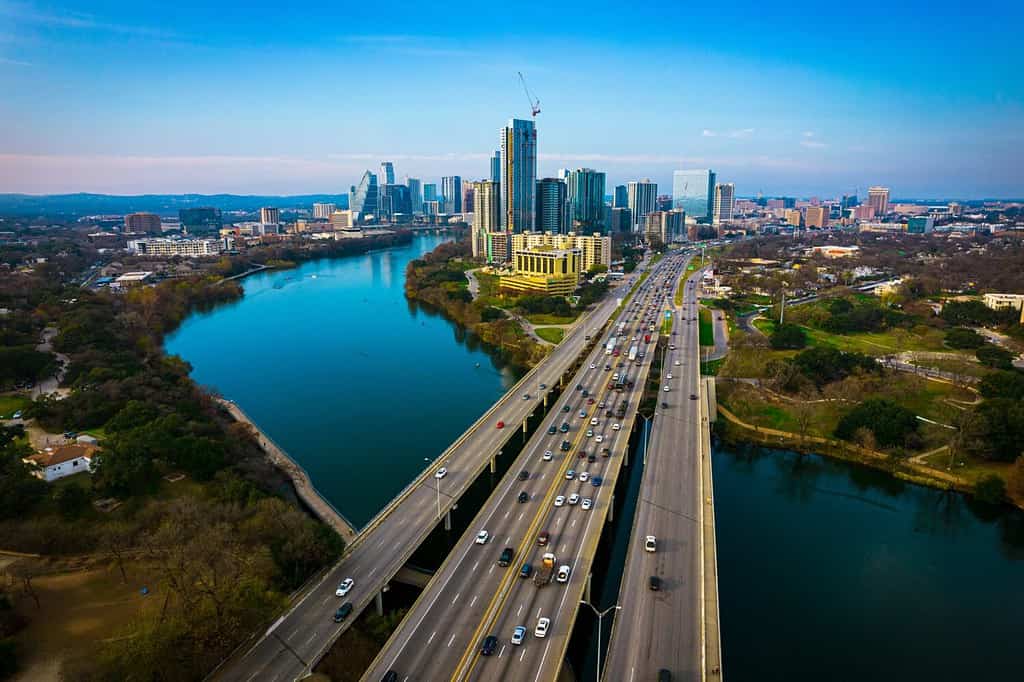
The Colorado River snakes through Texas and is seen here just outside of Austin.
©Roschetzky Photography/Shutterstock.com
What Makes These Rivers Dangerous
There are plenty of rivers across the state of Texas, and there have been hundreds of drowning deaths related to these rivers. Foot entrapments occur when rocks at the bottom of the river can ensnare you while standing and wading through water. It’s essential to keep an eye out for strainers, too. Trees or branches can quickly create pinning hazards. You can spot them by keeping an eye on irregular flow patterns on the river. You might also find artificial entrapments due to littering. Things like junked cars, bridge pilings, or dams can become hazardous.
Broaching occurs when you turn broadside into the waves, creating the possibility of capsizing. Some of these rivers are famous for causing even the most seasoned kayakers to capsize. Also, undercuts are water features that interact with the current, causing it to flow under the surface. Most guidebooks will point out where these dangerous features are located. It’s easy to encounter entanglements as well. Your boat will likely have ropes and lines, which can quickly lead to knots and tangles. So, which rivers are the deadliest in Texas?
1. Guadalupe River
The Guadalupe River can see significant rainfall, increasing water levels, and making tubing or other activities more dangerous. Officials also warn that deadly bacteria can be present as well. E. coli might make activities on this river even more dangerous. This river is 230 miles and has the highest number of reported deaths in all of Texas. It is definitely one of the most dangerous rivers in Texas!

It might look tempting to jump in, but dangerous bacteria levels are a big concern.
©JaDipity/Shutterstock.com
2. Trinity River
The Trinity River is a generally slow-moving river that can be great for laid-back activities. It reaches 710 miles in length. What makes Trinity River one of the most dangerous rivers in Texas is its pollution levels. The closer you get to Dallas, the worse it gets. Parts of this river have too few runoff regulations, meaning bacteria can thrive. There have been drownings as recently as April of 2023.
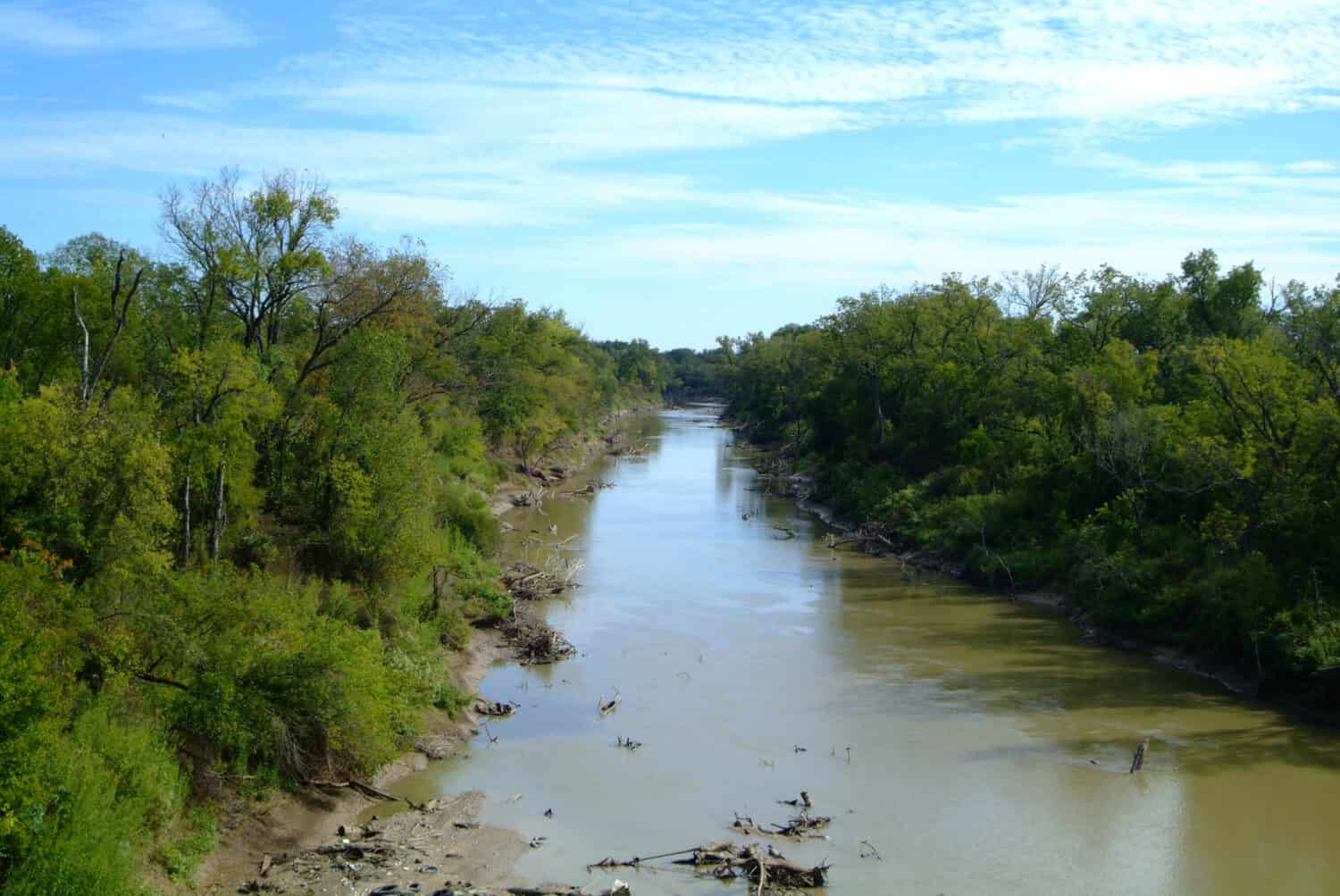
This brown river has high pollution levels.
©Karen P Stilwell/Shutterstock.com
3. Neches River
The Neches River is known for its many obstacles. It’s 416 miles and empties into the Gulf of Mexico. Occasional log jams can make the use of the river by recreationists impossible. Trying to swim along log jams can lead to drowning or injury. There have been over four reported drownings alone this year.

Injuries and death are common along the Neches River.
©IVAN KUZKIN/Shutterstock.com
4. Rio Grande
The Rio Grande is a well-known, large river in Texas. But most locals will tell you to avoid swimming in this 1,885-mile-long river. One major reason is the varying water levels, making it hard to traverse predictably. Also, due to municipal, industrial, and agricultural contaminants, the pollution levels of the water are pretty extreme. Because of its proximity to Mexico, it has high water-related deaths due to failed smuggling attempts.

Experiencing the Rio Grande from the sky via hot air balloons.
©gmeland/Shutterstock.com
5. Brazos River
Not only is the Brazos River highly polluted, it is known to be home to a brain-eating amoeba. This parasite causes Primary Amoebic Meningoencephalitis and has a high mortality rate. Many areas of this 840-mile river can become clogged with debris from storms, causing high surface currents, which can sweep you away quickly.
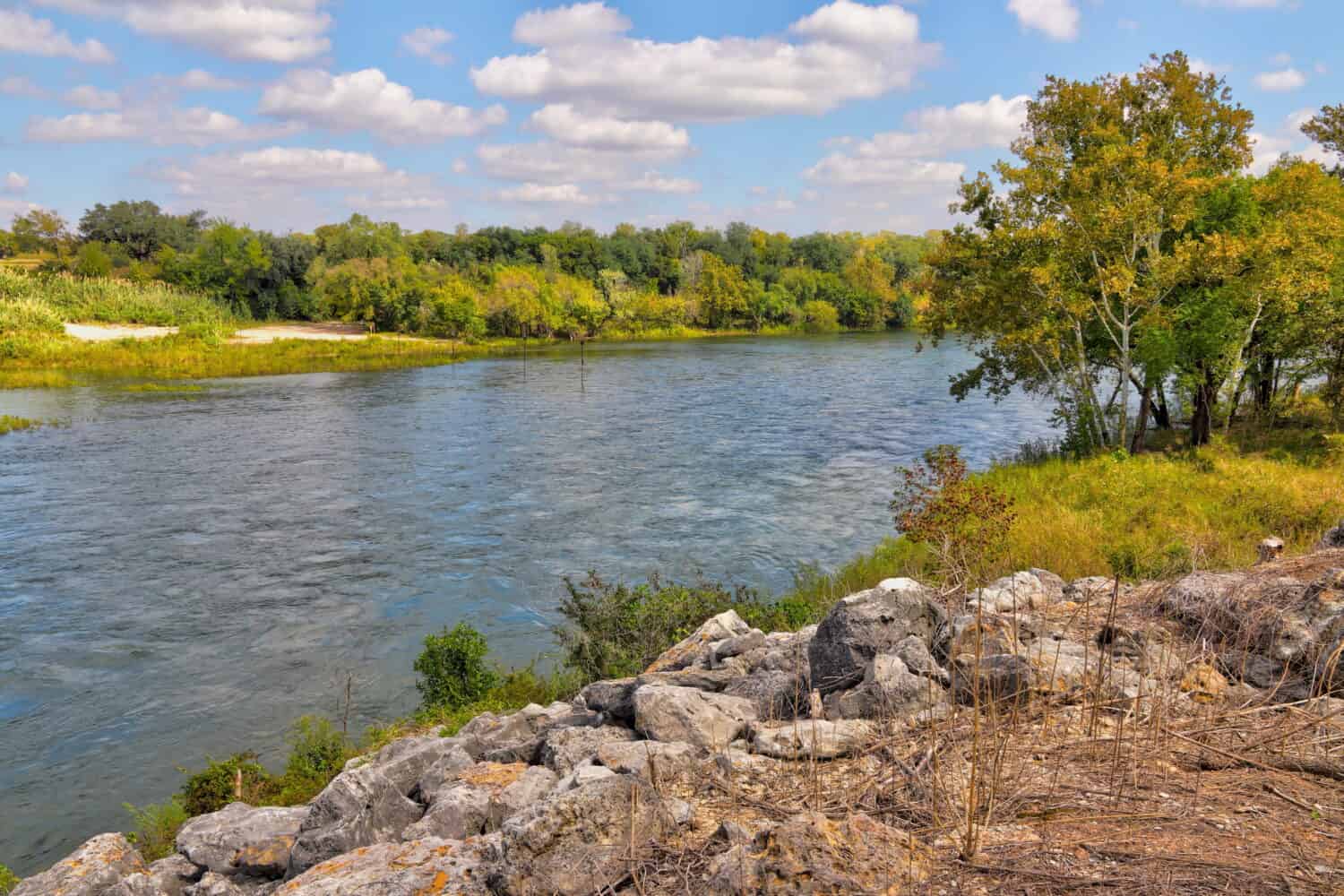
A brain-eating amoeba might lurk in these choppy waters!
©Hundley Photography/Shutterstock.com
6. Colorado River
Did you know the Colorado River is one of the most heavily polluted waterways in the United States? This long river clocks in at 1,450 miles. Heavy metals, including mercury, lead, and cadmium, are known to pollute these waters. Rafting can be safe, but there are several recorded drowning deaths. The water tends to be extremely fast and notoriously cold!
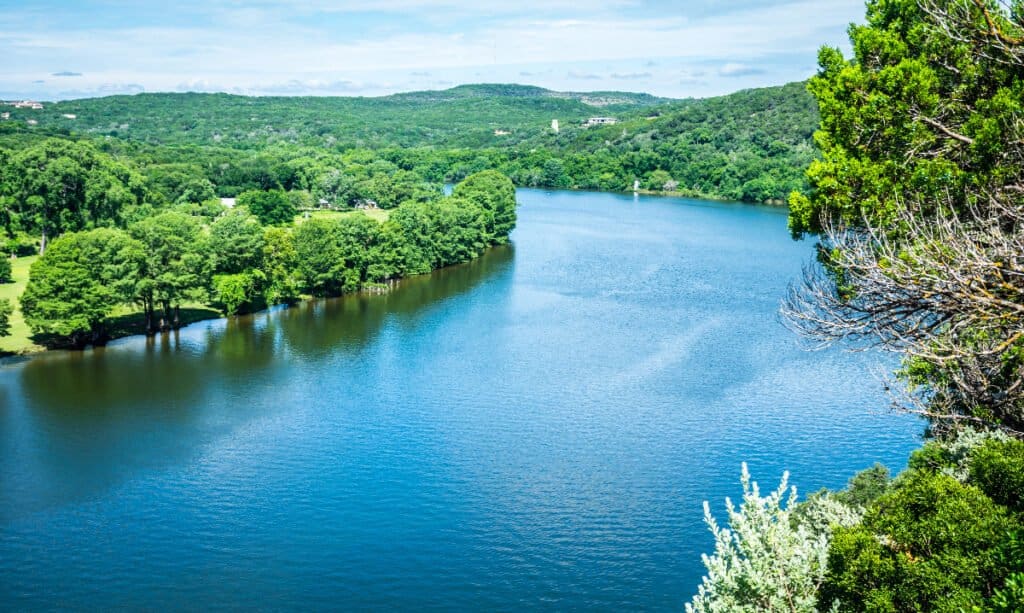
While confusing, the Colorado River in Texas doesn’t leave the state.
©Roschetzky Photography/Shutterstock.com
7. Sabine River
The Sabine River sees at least one drowning every year. The currents change rapidly, going from slow to raging in a matter of moments. Trees near the river’s edge cave into the water, creating a snarl of debris that can trap you if the river floods. It’s also home to plenty of snakes! The muddy banks, murky waters, and logjams on this 510-mile-long river create a plethora of issues for recreationists.
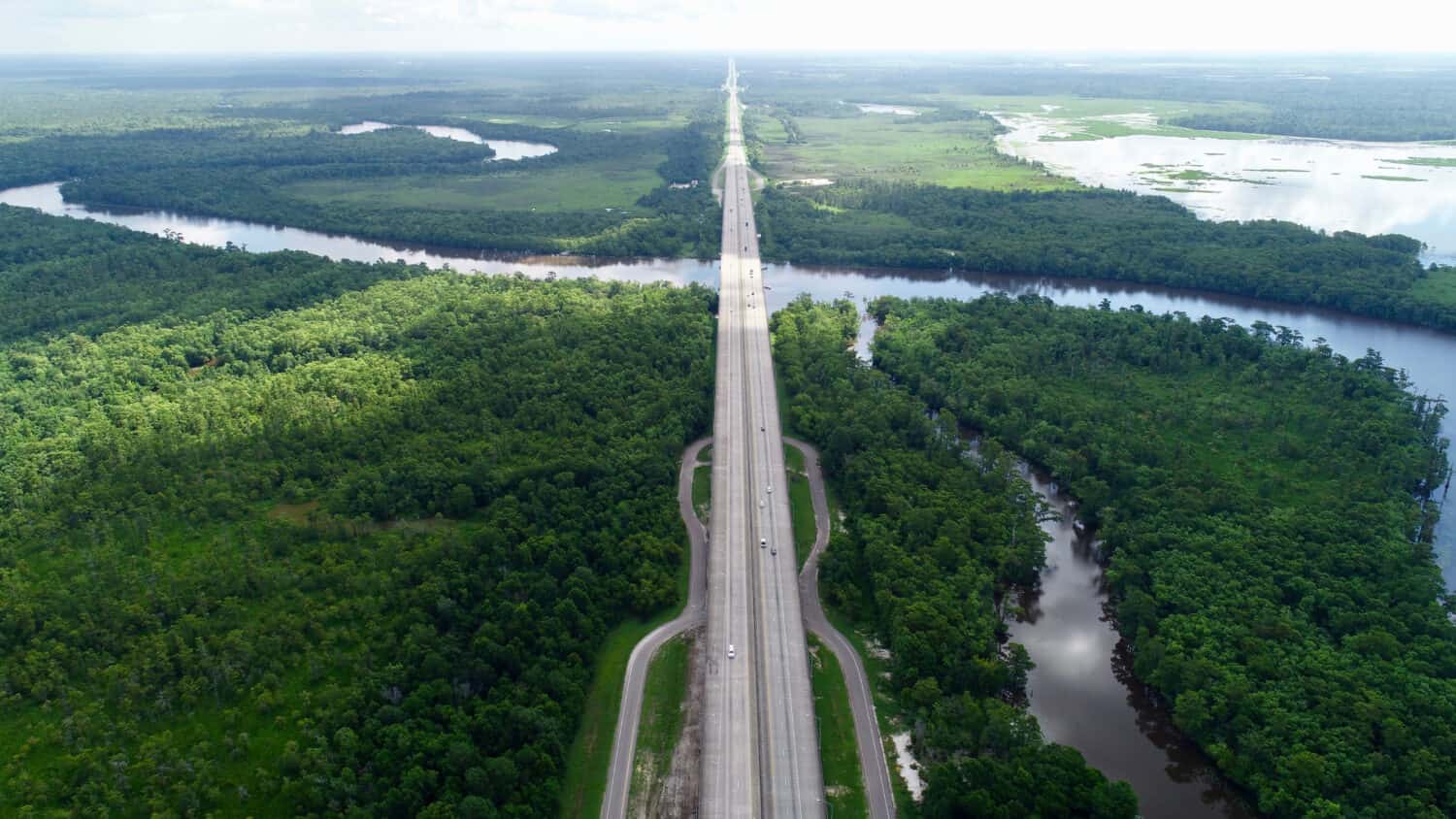
Don’t swim in this river if you are scared of snakes.
©Lewis Directed Films/Shutterstock.com
8. San Jacinto River
The San Jacinto River reaches only 28 miles but sees its fair share of drownings. More lives were claimed over the summer, and likely won’t be the last. The undercurrent of this river is quicker than you might think. Thorns, snakes, and other hazards are easy to come across. The biggest issue is the waste pits that were built in the 1960s, which are leaking into the water. The chemicals released are called dioxins, which are known to cause cancer.
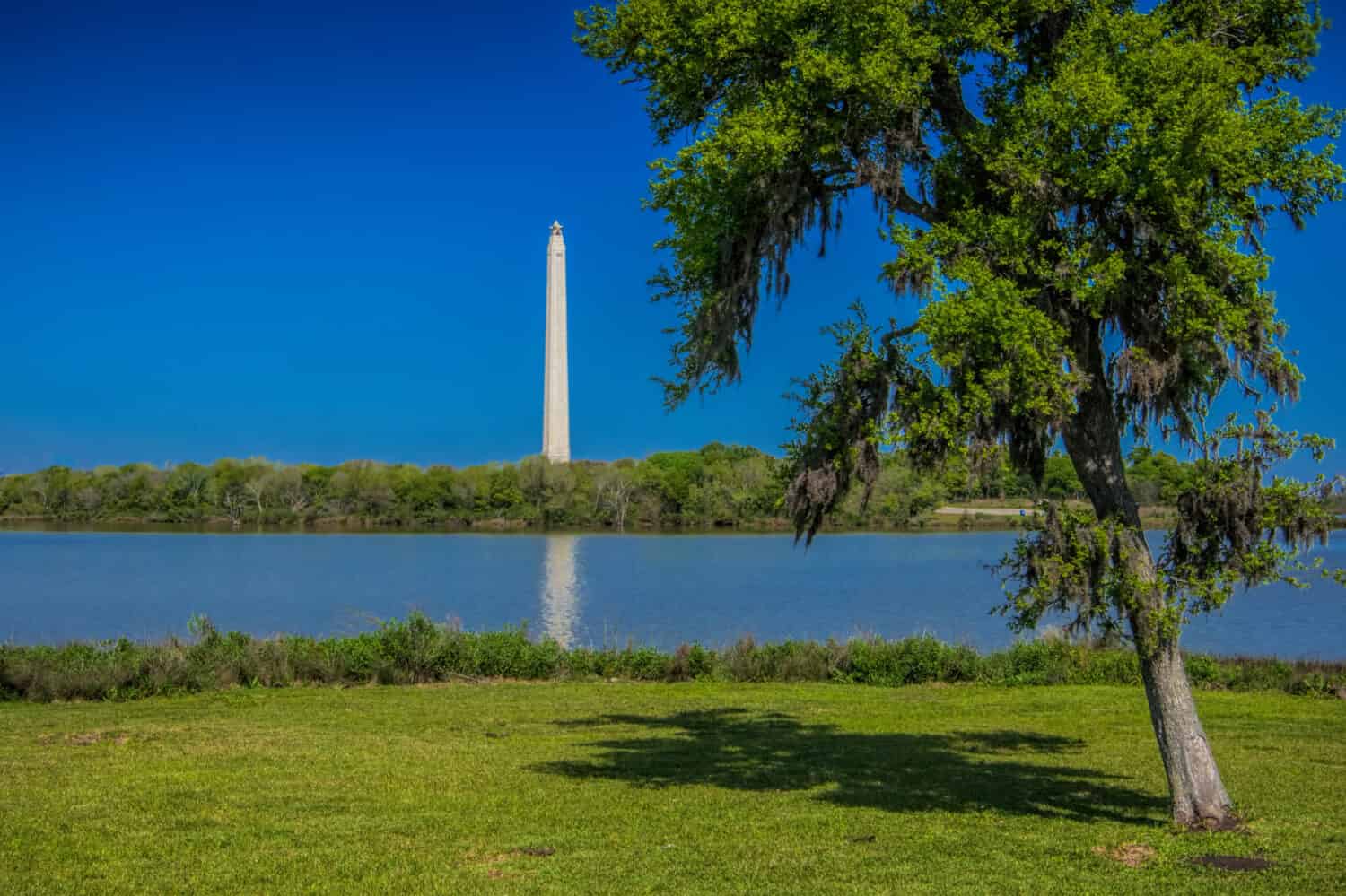
Waste pits have destroyed this river.
©B. Franklin/Shutterstock.com
The photo featured at the top of this post is © Martha Marks/Shutterstock.com
Thank you for reading! Have some feedback for us? Contact the AZ Animals editorial team.






